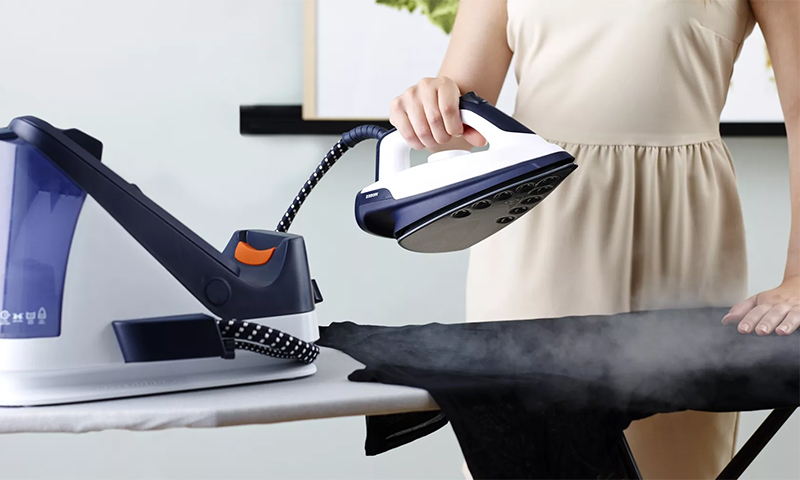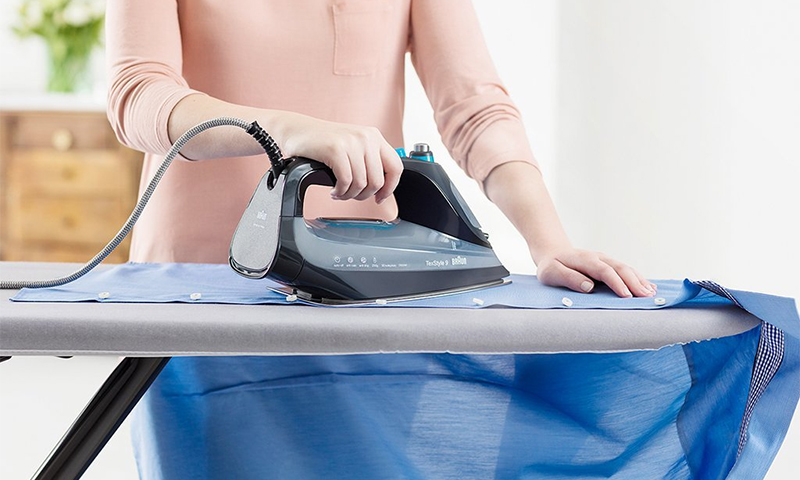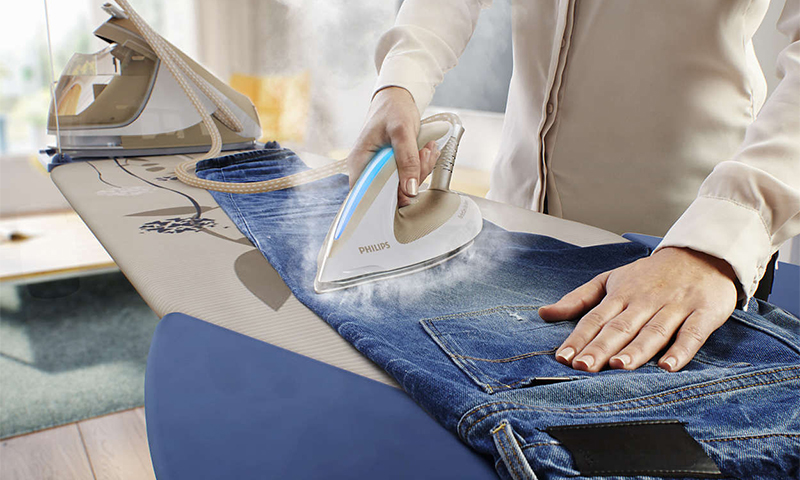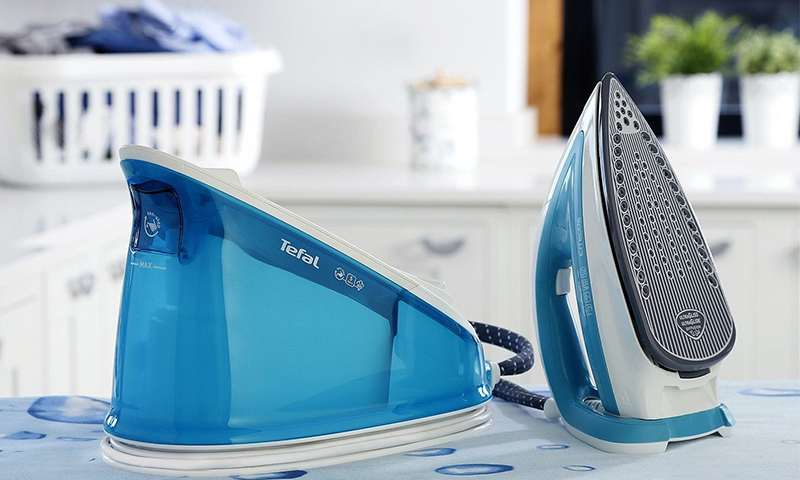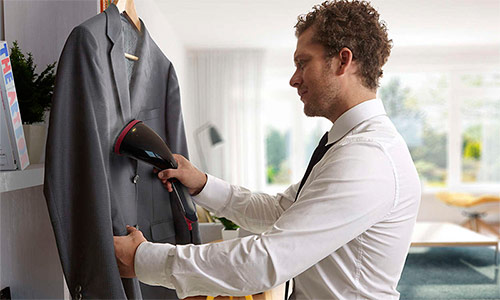The hostess has enough: cleaning, washing, cooking and the least favorite thing is ironing things. To make this tedious process easier and easier, we buy the best and most functional irons, but we completely forget that the ironing board also needs a good one. Today, manufacturers offer such boards for every taste - from simple budget models to active devices that help iron out even delicate and “intractable” fabrics. We will tell you how to choose such an assistant.

Content:
The best manufacturers of ironing boards - which company to choose
The stores feature a huge number of ironing boards - made from different materials, with their own ways of folding and design features. But to determine how long this or that model will serve you at first sight can be difficult. Therefore, first of all you need to focus on the name of the manufacturer.
Excellent ironing boards produce the following brands:
- Philips;
- Bosch;
- Hausmann;
- Nika;
- Prisma.
You can get acquainted with their best models and choose the board that you like best in our article. But is it worth narrowing the circle of searches to several models? It is better to spend a few minutes and understand all the nuances, and then find the most convenient ironing board for yourself.
The principle of operation and the device ironing board
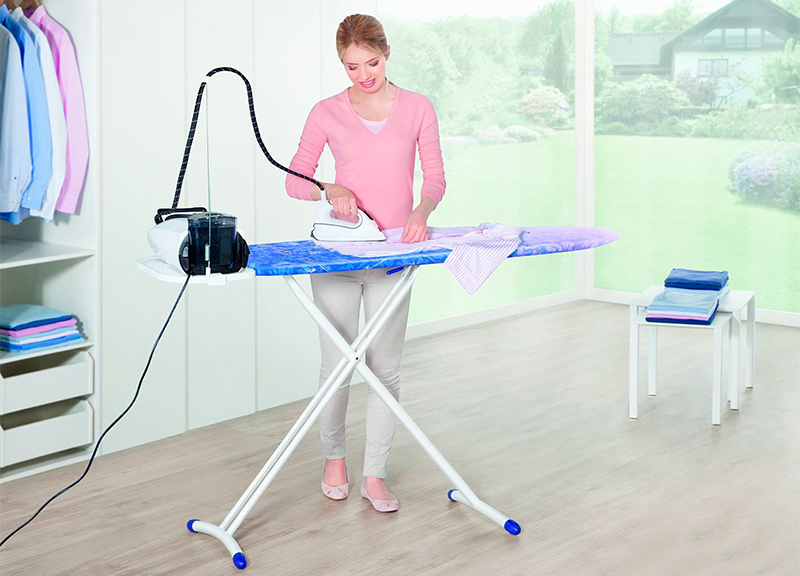
Almost all ironing boards are alike - they are simple figured tops covered with a cloth. Differences can be found except in the design of supports and folding mechanisms or height adjustment.
There are the usual folding boards with scissor legs - they are regulated in only 2-3 positions thanks to the support hooks on the back side of the table top. There are also retractable or folding models that do not have legs at all, but simply leave the cabinet or cabinet. Some built-in boards hide for the time being in furniture or a wall niche, for example, behind a mirror, and, if necessary, fold back, taking a horizontal position.
Also for our convenience, manufacturers offer models with different “buns” that make ironing more convenient. These are additional elements that extend the functionality of primitive boards.
These include:
1. Heat-resistant stand for the iron (or reinforced for the steam generator);
2. Cord lock;
3. Extension cable with socket;
4. Grid for linen;
5. Rollers or extensions for ironing sleeves and small things;
6. Folding wings for ironing shirts.
Types of ironing boards
Despite the very primitive design of the ironing board as such, manufacturers manage to improve the classic models, creating all new types of them.
Outdoor
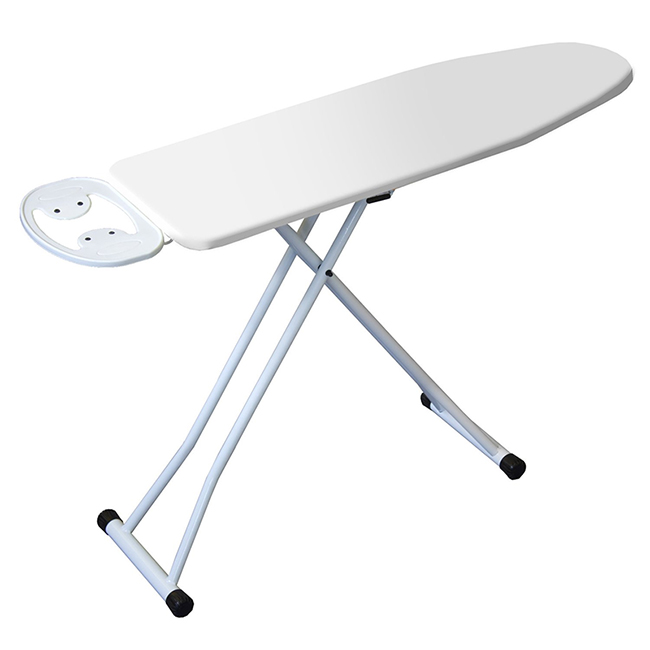
The standard and most common type of ironing board, folding up to the state of a high table. Assembly is compact, extremely simple and convenient if you are used to ironing while standing.
Earlier models had a so-called step height adjustment - it is now found on budget boards. Modern designs come with a smooth folding system that allows you to set the height of the tabletop to your height.
Also today, hybrids have appeared that easily turn into clothes dryers and even step-ladders - an excellent choice for small-sized apartments, in which there is no place to store several different devices.
Pros:
- Good stability;
- The optimal size of the table top (usually 140x35 cm);
- Many models are equipped with a removable cover that can be washed or replaced;
- In the kit almost always comes stand for iron;
- Rubber pads on the legs do not scratch the floor;
- In more expensive models, a holder for the cord or a separate outlet is provided;
- There are functional hybrids with dryers, laundry nets, etc.
Minuses:
- Cumbersome when unfolded;
- Too heavy.
Tabletop
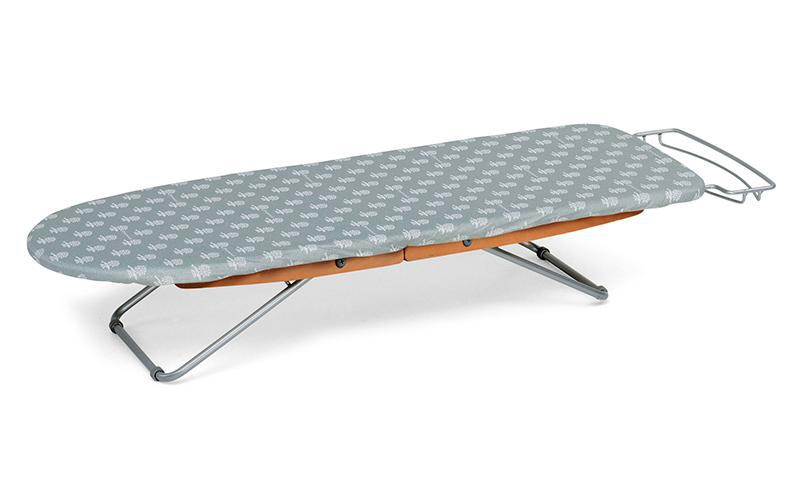
"Younger sisters" of floorboards with very short legs - 10-20 cm high. As the name implies, such models are placed on a table or any other level surface, and then used as ordinary devices.
Here the dimensions of the table top are noticeably smaller than the standard ones (usually 70x30 cm), so that they are not too comfortable for ironing bed linen. But to put in order a shirt or skirt on such a crumb is quite realistic.
Pros:
- Very resistant;
- Lightweight and compact;
- Just laid out;
- Convenient to store - you can even hang on the wall on a special hook;
- Absolutely transportable.
Minuses:
- It is inconvenient to iron bed linen, curtains and other large things;
- Not particularly durable and easy to bend.
Embedded

Each hostess dreams of such an ironing board. It does not need to look for a storage place, there is no need to carry a bulky device throughout the apartment. And most importantly - these models do not spoil the interior at all, turning into real stealth.
The built-in board can be a part of a furniture set or hide in a separate niche behind a mirror, panel or decorative door. These models are convenient to use and as practical as regular boards, but not mobile - they cannot be moved to another room or taken with you on a trip.
Pros:
- Compact and original design;
- The same functionality as a regular ironing board;
- Convenient folding / unfolding system;
- The ability to choose any design "inside out" (in the form of panels, mirrors, cabinet);
- Reliable fixation in the working position - such a board will not exactly turn over;
- Maintain a weight from 20 to 50 kg depending on the chosen fastening;
- Often come already with built-in outlet.
Minuses:
- Cannot be moved to another location;
- There are no additional functions (hangers, dryers, shelves for things, etc.);
- High price;
- The design is heavy and requires very secure fastening.
Transformers

This category includes hybrids, similar to a cabinet or chest of drawers with a folding top in the form of an ironing board. This design saves space in the apartment, while it is functional and practical.
With a little effort, the bedside table turns into a comfortable and reliable ironing board, and on the shelves or in the drawers you can store clothes, iron and other necessary things. The main thing - to choose the color and design, in harmony with the rest of the furniture in the room.
Pros:
- Super functional;
- Very resistant;
- Fit perfectly in the interior;
- On the shelves and in the boxes you can store a lot of all sorts of things.
Minuses:
- Not very mobile, although you can still rearrange them from place to place;
- If you put the cabinet too close to other furniture, there are problems with folding the board.
Ironing board selection options
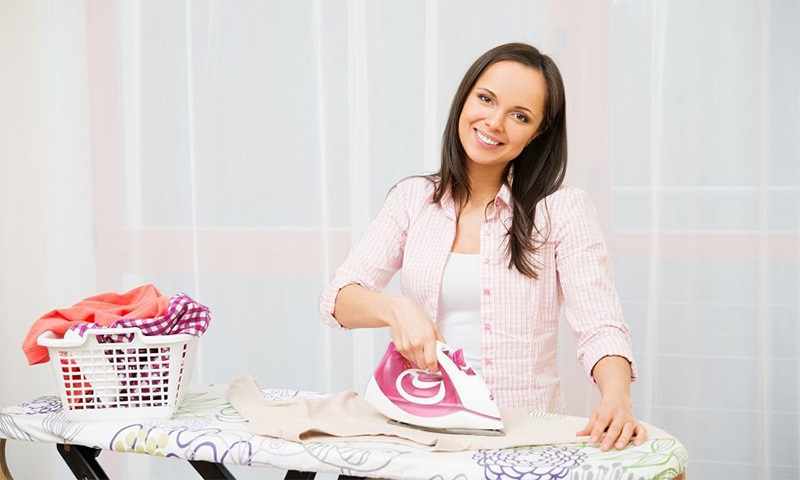
Choosing an ironing board often makes compromises. After all, we face the challenge of combining functionality and compact size, low weight and reliability of the design.
Worktop material
Manufacturers offer several different price and durability options:
1. Pressed plates
Despite the name taken root, ironing boards have long been made by nobody from real boards. Now in the course of a plate of pressed wood: plywood, chipboard, MDF. To the tabletop was strong enough, it is made thicker, because of what the weight of the whole structure increases significantly. Alas, even under a thick layer of the substrate, such plates are gradually absorbed by moisture, swell or exfoliate under the influence of high temperatures.
2. Plastic
Ironing boards from this modern material are very light, but strong enough and durable.Due to the numerous holes, they are well discharged excess moisture accumulating in the upholstery. The main thing is that for the production of countertops it is used heat-resistant plastic. Ideally, if it also has heat-reflecting properties, it will be easier to iron things on the board. However, in this case the cost of the whole structure will increase.
3. Metal
Usually it is steel or aluminum. In the first case, you get a heavy, durable and very durable material. Alas, with time passing wet steam can cause its corrosion with all the ensuing consequences (rusty spots on the substrate and the cover). If you take light and moisture-resistant aluminum, be prepared for the fact that the board will require careful handling and careful storage - this metal is too easy to bend.
Work surface size
The choice of the size of the ironing surface depends on the frequency of use of the board, the number and size of linen, as well as on the free square meters that you have. Manufacturers offer countertops with a variety of dimensions, so finding the appropriate option will be easy.
We will list the most common sizes:
1. Classic board comes with a working surface from 110x30 to 120x38 cm;
2. New models are already bigger - they are produced in sizes from 130x35 to 150x45 cm;
3. The size of the sideboard or commode in unfolded form reaches 130x35 cm;
4. The built-in boards on average come with a surface of 128 x 38 cm, but you can always order production according to individual sizes;
5. Desktop models are the most compact - 70x30 (plus or minus a couple of centimeters).
Upholstery and cover
Having dealt with the surface of the tabletop, consider the types of fabrics that are used for upholstery and sewing covers.
Let's start with the last ones, because they are the ones in sight and in contact with the iron and our things:
1. Canvas - certainly high density, unpainted, and ideally even unclarified. This is a great option for everyday use. Clothes from such material does not slide off, the cover is also washed off without any problems, but too hot iron can easily leave it burning.
2. Cotton fabrics are usually inexpensive, thin, brightly colored covers that don't last for a long time. Yes, they are natural, give the ironing board a nice appearance, but if the manufacturer has saved on dye, steaming white things on such a surface may result in the appearance of a “transfer image” on clothes.
3. Heat-resistant synthetics - now such covers are increasingly found on branded boards. They have non-stick properties, and some even reflect the heat, facilitating ironing.
4. Carbon fiber is a technological and very durable material that not only reflects the infrared radiation of an iron, but also does not allow hot steam. Ideal for hard-to-stretch fabrics like flax.
As for stuffing, here you need to know how certain materials behave under the influence of steam and high temperature:
1. The synthetic padding will deform with time, reducing the quality of ironing - it is better to abandon it immediately.
2. Foam rubber is a budget and also extremely short-lived material, besides not sufficiently dense.
3. Batting - has good elasticity, but too easily accumulates moisture. Such stuffing is suitable only for plastic and metal boards with a perforated top.
Additional functions
Considering the device of standard models, we have already said that ironing boards can have any additional elements like shelves and holders. But today there are more advanced specimens - the so-called active devices for ironing.
Ironing boards can have the following interesting features:
1. Charging - using the built-in fan, the board cover is inflated from the inside, creating something like an air gap.This allows not to iron, but to steam off delicate fabrics, avoiding accidental ironing of folds, stretching knitwear and deformation of decorative elements.
2. Steam suction - when turning on the fan for reverse, the reverse process occurs. The air as it is pumped from the surface of the board, forcing the clothes to stick to the cover for a while, to make it easier to iron. Surplus of wet steam is also diverted, therefore there are no wet stains on the upholstery of the board or on the linen.
3. Preheating the working surface - a hot board will help the iron to smooth out even the most “naughty” clothes.
What ironing board to choose

1. Students and people who are constantly on the road, suitable desktop ironing board with a plastic or aluminum tabletop - a compact, mobile and very light.
2. For a spacious cabins or walk-in closet, you can buy a transformed curbstone or chest of drawers - save space and money. Just choose a model with a wadding backing, as well as a durable synthetic or canvas case, so that the board does not have to be retightened in a year.
3. For a small apartment fit built-in board. It can, for example, be placed in the corridor or even in the living room and arranged in the form of a mirror (mural, paintings). But when choosing, give preference to light materials like thermoplastic or aluminum, so that the mount holds the weight of the console tabletop.
4. For a large family in a private house or spacious apartment, it is better to purchase a full-size floor board with a metal or plastic tabletop 150x40 cm. Ideally, it will be equipped with a heat-resistant stand for an iron and a shelf for laundry. The same board should be chosen by those who use the steam station instead of the usual iron.
How much does an ironing board cost
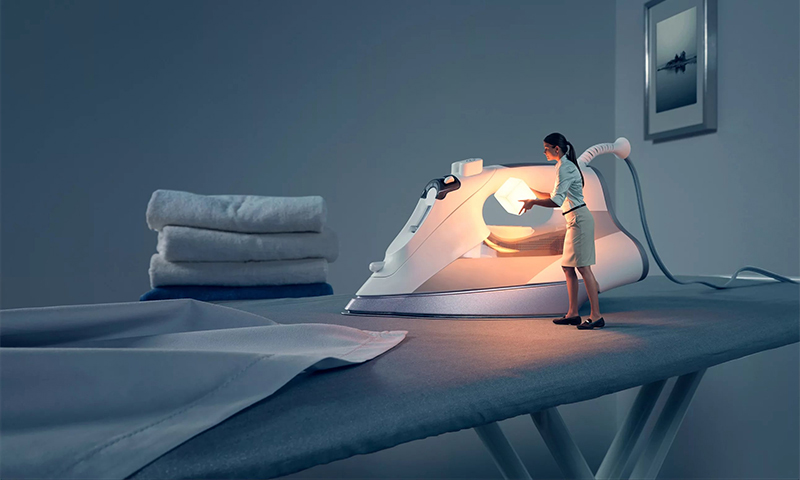
1. A classic ironing board with fiberboard worktop can be purchased for 500-1200 rubles. For a metal base will have to pay from 1500 to 8000.
2. Board boards cost from 400 to 9000 rubles.
3. For boards, cabinets and dressers have to lay out at least 6.5-17 thousand.
4. The built-in model will cost the owners at least 12,500 rubles. It all depends on its size, method of embedding and decorative design of the back side.
5. Boards for steam generators start from the mark of 1600 rubles - these are the simplest models with a non-stick cover and a reinforced stand for the steamer base. The ceiling is 72 thousand for professional active models with a fan.
It will be interesting to friends too

